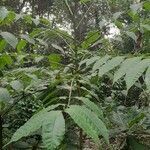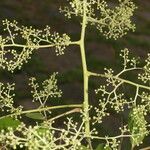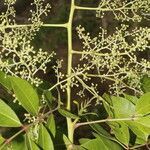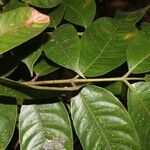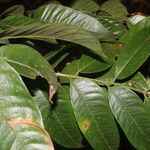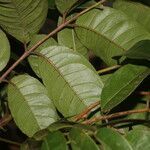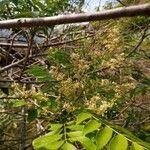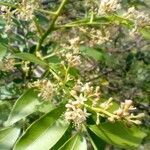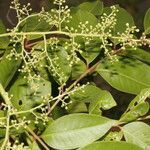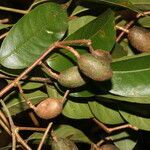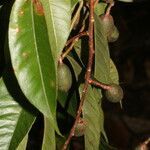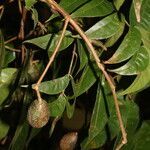Tree 6-27 m high with smooth or furrowed bark, the trunk straight. Leaves with 3-15 pairs of leaflets, the proximal leaflets alternate and the distal ? opposite, the rachis 7-35 cm long; lamina of leaflets oblong to somewhat ovate or obovate, apically acuminate or less frequently acute, basally acute to broadly obtuse, oblique and assymetric at the base, 5.5-14 cm long, 2-6.5 cm broad, membranous or sub-coriaceous, glabrous or short-pilose on the nerves and along the margins; petiolules 2-7(-12) mm long (not including the petiolule of the terminal leaflet which is often longer). Panicles terminal, 15-40 cm long, minutely hirsutulous. Flowers cc, I, 5-merous, the articulated pedicels 1.5-5 mm long; calyx-segments scale-like, ca 0.5 mm long, deltoid or deltoid-ovate; petals oblong-lanceolate or elliptic-lanceolate, apically uncinate, 2-3.5 mm long, spreading to reflexed, white or yellow; stamens 10, subequal, slightly shorter than the petals, the anthers ca 1 mm long, slightly curved, oblong-quadrate, relatively massive; disc strongly crenate (annular but virtually divided into 10 separate cushions); styles 5, more or less linear, virtually uncon-stricted at the beginning of the stigmatic portion, glabrous, ca 1 mm long. Drupes ovoid to obovoid or oblong, 1.5-4 cm long, 1-2.5 cm broad, yellow.
A medium sized tree. It grows 20-30 m high. The trunk can be 0.5-2 m across. Branches start after 10-15 m. They are widespread and sparse. The leaves are compound. They have leaflets along the stalk. The leaflets are in pairs with a leaflet at the end. There are 5-9 pairs. The flowers occur on stalks near the ends of the branches. The fruit are small and yellow. They are 2.5-4 cm long. They have one large seed. The flesh is sub-acid.
Bark thick with longitudinal fissures
Large panicles of small white flowers
A deciduous tree, to 60 ft. high
Yellow plum-like fruits
